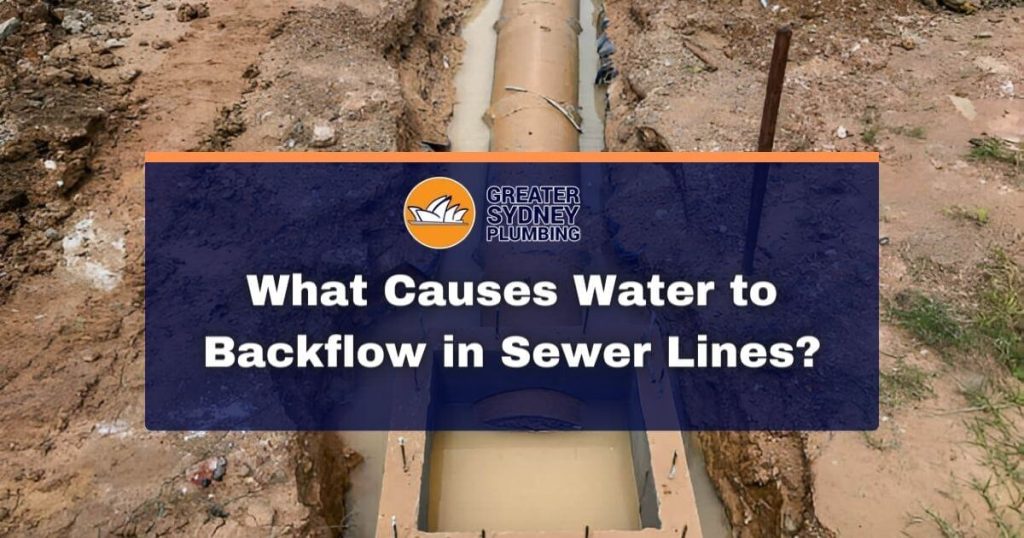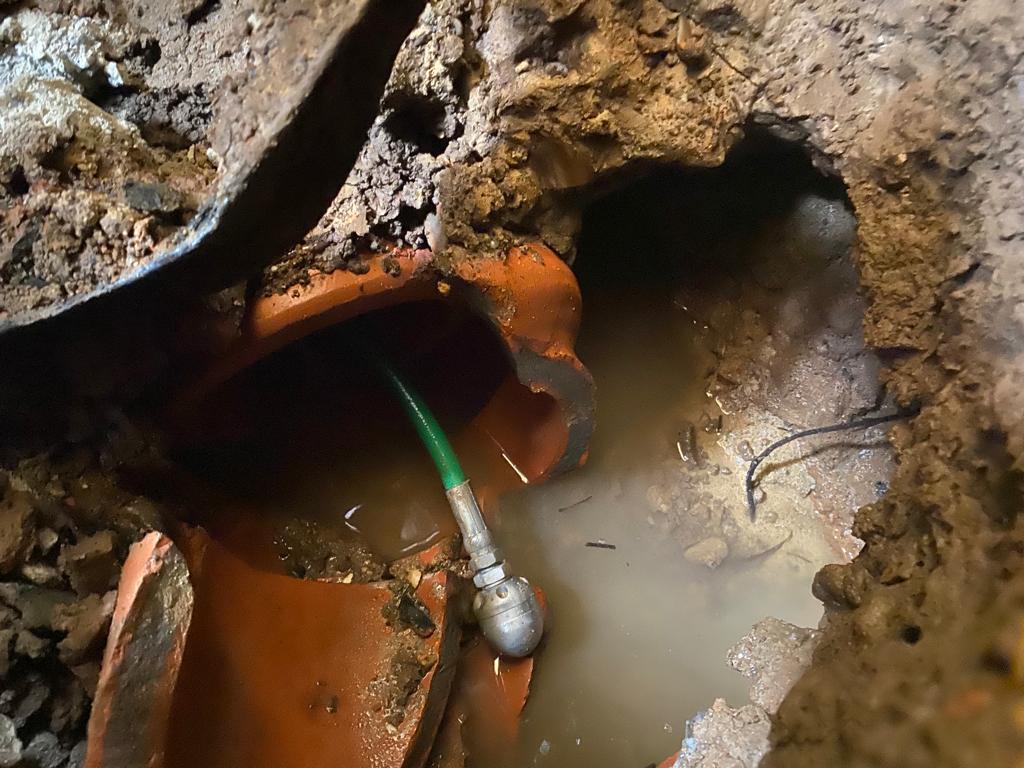Backflow in sewer systems is a common issue that can cause major problems for both homeowners and the environment. Essentially, backflow occurs when contaminated water from the sewer system flows back into your home’s water supply.
This can happen due to a variety of reasons such as pipe burst, heavy rain leading to sewage overflow, or even clogs in the main sewer line.
So how can you prevent backflow in your sewer system? Here are the solutions in this guide that you can take to minimize the risk of this happening.
What is Backflow Prevention?
Backflow prevention is a method used to keep contaminated water from flowing back into the clean water supply.
It involves installing backflow prevention devices that act as a barrier between your home’s plumbing system and the public sewer system.
These devices are designed to stop any reverse flow of wastewater, preventing it from contaminating your household water.
What Causes Water to Backflow in Sewer Lines?

There are several possible causes of backflow in sewer lines, including:
- Clogged Sewer Pipes: When your sewer pipes are clogged or damaged, it can cause a blockage and prevent wastewater from flowing properly. This can result in pressure build-up and eventually lead to backflow.
- Malfunctioning Backwater Valve: A backwater valve is a device that prevents sewage from flowing back into your home. If this valve malfunctions or is not installed correctly, it can fail to do its job and allow for backflow.
- Heavy Rainfall: During heavy rainfall, sewers can become overwhelmed with excess water and cause backups or backflow. This is especially common in older sewer systems that are not equipped to handle large amounts of water.
- Improperly Designed Sewage System: In some cases, backflow may occur due to an improperly designed sewage system. This could be due to incorrect pipe sizes or inadequate slope, which leads to reduced flow capacity and increases the risk of backflow.
- Sewer Line Damage: Damage to the sewer line can also increase the risk of backflow. Any cracks, sewer leaks, or breaks in the line can allow wastewater to escape and potentially contaminate your home.
- High Water Table: If you live in an area with a high water table, your home may be at a greater risk for backflow. This is because the water table can put pressure on sewage pipes and potentially cause them to burst or leak, leading to backflow.
What is One Way of Preventing Backflow: the Best and the Most Effective
The most effective way to prevent backflow is by installing a backflow prevention device. This device acts as a barrier between your main water supply and any potential sources of contamination, such as sewage or chemical storage tanks.
There are various types of backflow prevention devices available, including check valves, air gaps, and reduced pressure zone (RPZ) assemblies. It is important to consult with a professional plumber to determine the best type of device for your specific needs.
In addition to installing a backflow prevention device, it is also crucial to regularly maintain and test the device to ensure its proper functioning. This will help identify any potential issues and allow for prompt repairs before they turn into costly and dangerous backflow incidents.
Also you should make sure to hire a licensed plumber in Sydney for your Backflow repair, if you are looking to check the plumbing License in NSW, you can go to official website and enter details.
Other Alternative Ways of backflow Prevention
1) Air Gap
This is one of the most common and effective ways to prevent backflow. It involves creating a physical gap between the water supply and the potential source of contamination, such as a sink or toilet.
The air gap allows for any potential contaminants to be flushed out before reaching the clean water supply. This method is widely used in both residential and commercial settings.
2) Barometric Loop
The barometric loop, also known as a break tank, is another effective way to prevent backflow. It works by creating a physical barrier between the water supply and potential contaminants. In this method, the water supply is fed into a tank with an overflow pipe that connects to the main drainage system.
If there is any negative pressure or backflow, the excess water will drain out through the overflow pipe, preventing it from contaminating the clean water supply.
3) Pressure Type Vacuum Breaker
This type of backflow prevention device consists of two check valves and an air inlet vent. One check valve prevents backflow from entering the system, while the other prevents backflow from exiting the system.
The air inlet vent allows for atmospheric pressure to enter the system, balancing out any changes in pressure and preventing backflow.
4) Double Check Valve
Similar to a pressure type vacuum breaker, this device also consists of two check valves. However, instead of an air inlet vent, it has a relief valve that opens when there is a drop in water pressure, allowing air to enter and prevent backflow. It is commonly used for smaller-scale applications such as irrigation systems.
5) Reduced Pressure Zone Assembly (RPZ)
This is a more complex backflow prevention device that utilizes multiple check valves and a relief valve to create a zone of reduced pressure between the water supply and potential contaminants.
If there is any change in pressure within this zone, the relief valve will open and discharge water to prevent backflow. This type of device is typically used in high-risk applications such as commercial buildings and industrial facilities.
6) Atmospheric Vacuum Breaker
Unlike the previous devices, an atmospheric vacuum breaker does not rely on pressure changes to prevent backflow.
Instead, it uses a simple check valve that opens when there is a drop in pressure, allowing air to enter and equalize the system’s pressure. This device is commonly used for outdoor faucets and hose bibs.
To ensure proper protection against backflow, it is crucial to select the right type of backflow prevention device based on the application.
It is also important to have these sewer devices regularly tested and maintained by a qualified professional to ensure they are functioning correctly.
Where is Backflow Preventer Located In Sewer Lines?
Backflow preventers can be located at various points in sewer lines, depending on the specific application and type of device being used.
In residential properties, backflow preventers are typically installed near the water meter or at the connection between the property’s plumbing system and the public sewer line. So you should assure to hire a best residential plumber in Sydney.
For commercial and industrial facilities, backflow preventers may be located at multiple points throughout the sewer system, such as where different pipes intersect or before a major change in elevation. This is to ensure that all potential sources of contamination are adequately protected.
It is important to note that backflow preventers should always be installed above ground level to avoid any potential sewer flooding that could compromise their functionality
What is the Process of Backflow Preventer Installation?
The installation process for backflow preventers may vary slightly depending on the type of property and the specific location where it needs to be installed.
However, there are some general steps that are typically followed for backflow preventer installation.
- Site Inspection: The first step in the installation process is to conduct a thorough site inspection. This involves assessing the existing plumbing system and determining the most suitable location for the backflow preventer to be installed.
- Excavation: In order to install a backflow preventer, a trench will need to be dug at the selected location. This will allow for easy access and proper installation of the device.
- Mounting: Once the trench has been dug, the backflow preventer can be mounted securely in place. This is usually done using concrete pads or support blocks to ensure stability.
- Connecting Pipes: The next step is to connect the backflow preventer to the existing plumbing system. This involves cutting into existing pipes and connecting them to the device using fittings and valves.
- Testing: After installation, a professional plumber should perform a series of tests on the backflow preventer to ensure it is functioning properly. These tests may include checking for leaks, measuring water pressure, and conducting flow tests.
- Backfilling: Once the backflow preventer has been tested and approved, the trench can be filled back in with soil. It is important to compact the soil around the device to ensure stability.
How Professional Sewer Service Providers Could Help in Backflow Preventer Installation?
Professional Plumbing Service providers have the knowledge, expertise, and equipment necessary to properly install backflow preventers. They are trained in the specific requirements and regulations for backflow prevention and can ensure that the device is installed correctly.
Conclusion
Preventing backflow in sewer lines is crucial for maintaining the integrity of residential and commercial plumbing systems. From installing backflow prevention devices such as backwater valves to implementing regular maintenance and monitoring, there are several effective measures that can safeguard properties from sewage backup and costly damage.
Greater Sydney Plumbing Pty Ltd can help you with a professional and precise installation of sewer lines and their components to prevents overflooding and the backlflow. We offers Plumbing Services in Erskine Park NSW and Nearby areas. You can call us at 0426 292 985 for more information.
By understanding and implementing these preventative strategies, property owners can proactively mitigate the risk of sewer backflow.



